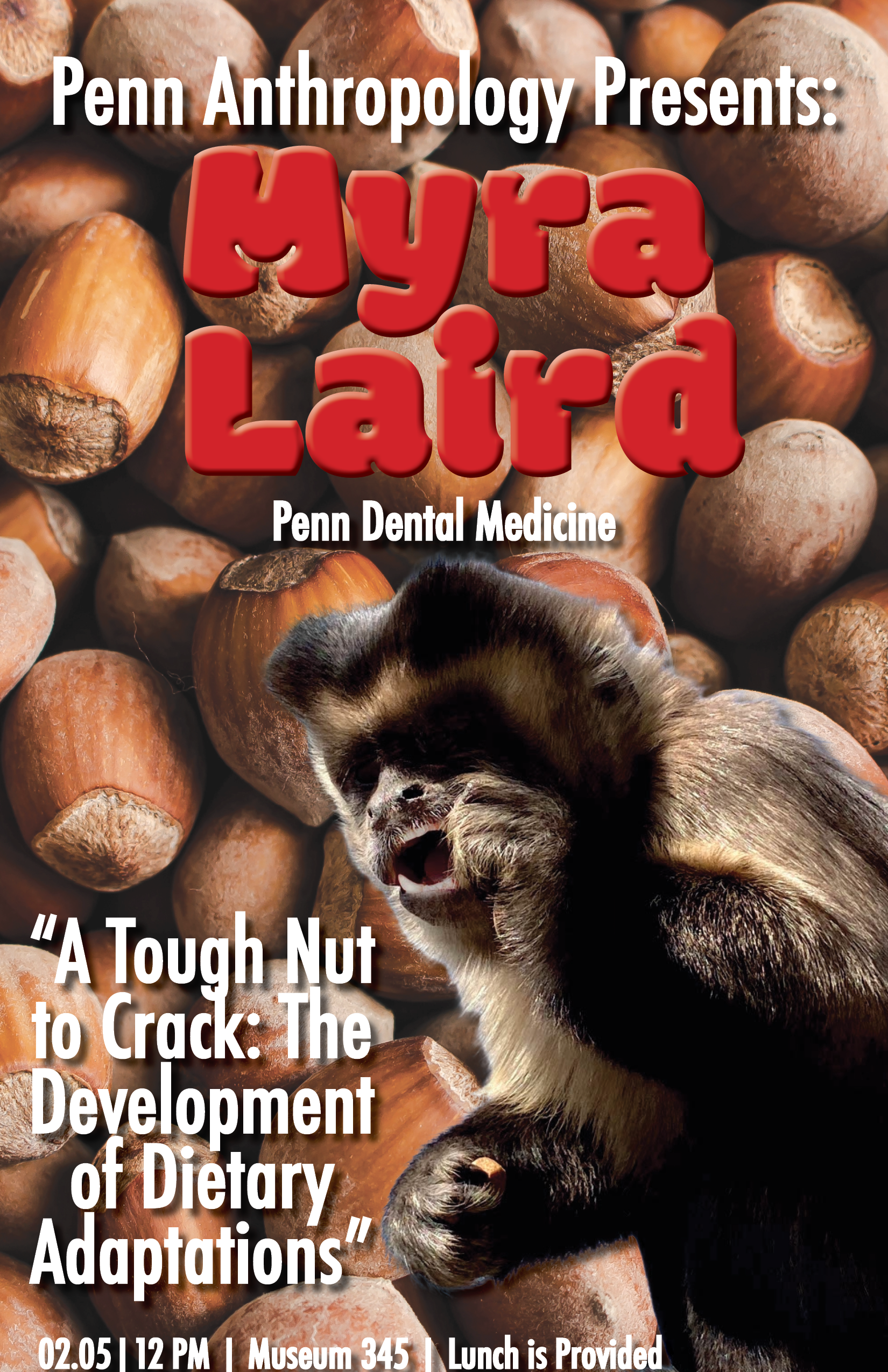Penn Museum 345

Diet is thought to play an important role in human evolution, and anthropologists have long sought to link feeding behavior, diet, and craniofacial morphology in extant primates. However, with few exceptions, the focus has been on adults. Here, Laird uses a life history framework to assess the development of dietary adaptations in two dietarily distinct primates—tufted and untufted capuchins—using morphological, experimental, and behavioral data. This work provides an understanding of how selection for feeding behavior strategies during growth and development shapes adult feeding behavior strategies and masticatory morphology as well as an integrated model for the appearance and differentiation of diet-driven morphology in fossil taxa.

 Department of Anthropology
Department of Anthropology